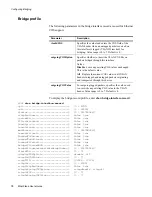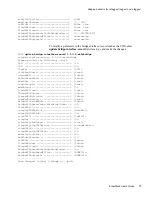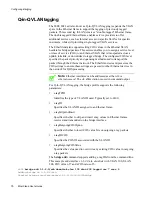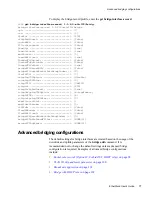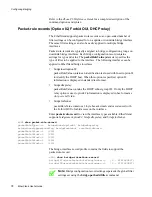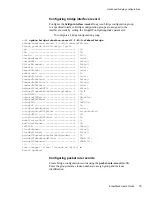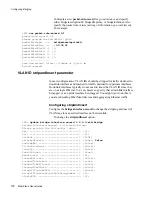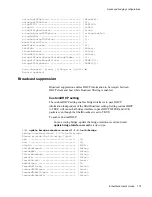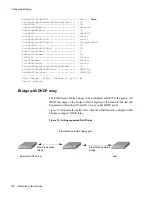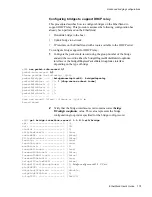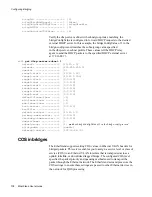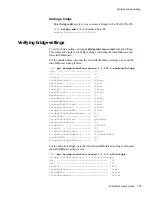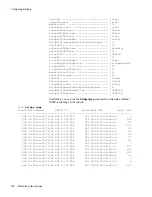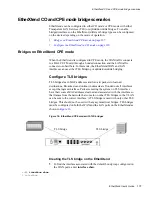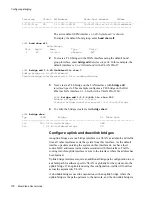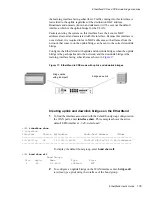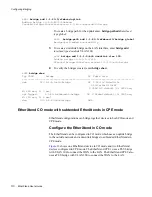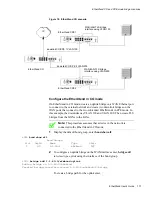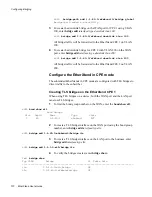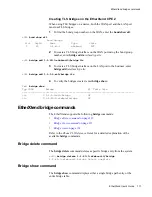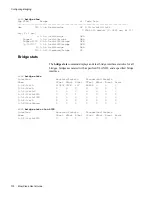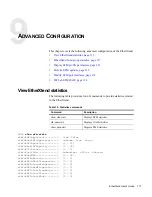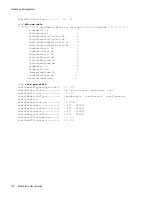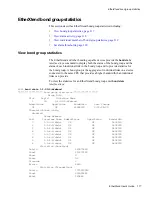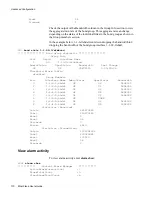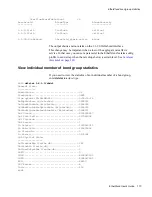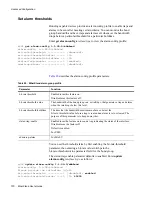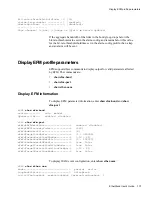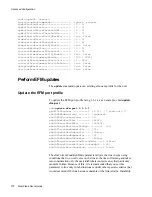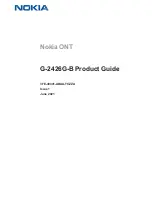
Configuring Bridging
108
EtherXtend User’s Guide
Interface Status Rd/Address Media/Dest Address IfName
--------------------------------------------------------------------------------
1/1/40/0/ip UP 1 10.250.1.40/24 00:01:47:36:2e:7b 1-1-40-0-efmbond-7
--------------------------------------------------------------------------------
The active default EFM interface
1-1-40-0-efmbond-7
is shown.
To display the default bond group, enter
bond show all
:
zSH>
bond show all
Bond Groups
Slot GrpId Name Type State
1 40
1-1-40-0 efmbond ACT
2
To create a TLS bridge on the WAN interface using the default bond
group interface, enter
bridge add
interface/type
tls
. In this example, the
default interface is
1-1-40-0/efmbond
with a VLAN ID of 7.
zSH>
bridge add 1-1-40-0/efmbond tls vlan 7
Adding bridge on 1-1-40-0/efmbond
Created bridge-interface-record 1-1-40-0-efmbond/bridge
3
Next, create a TLS bridge on the LAN interface with
bridge add
interface/type tls
. This example configures a TLS bridge on the first
Ethernet LAN interface 1-1-1-0-eth with a VLAN ID of 200.
zSH>
bridge add 1-1-1-0/eth tls vlan 200
Adding bridge on 1-1-1-0/eth
Created bridge-interface-record 1-1-1-0-eth/bridge
4
To verify the bridges created, enter
bridge show
:
zSH>
bridge show
Typ
VLAN Bridge St Table Data
---------------------------------------------------------------------------------
tls 200 1-1-1-0-eth/bridge
DWN
tls 7 1-1-40-0-efmbond/bridge
UP
Configure uplink and downlink bridges
An uplink bridge uses one bridge interface in a VLAN as a default, and traffic
from all other interfaces exits the system from this interface. As the default
interface, packets entering the system on this interface do not have their
source MAC addresses learned and associated with this interface. Traffic
coming into this uplink interface is sent to the interface where the address has
been learned.
Uplink bridge interfaces require an additional bridge-path configuration to set
a default path for either a specific VLAN or globally for the system onto the
uplink bridge. If an uplink is missing this configuration, traffic will not flow
across the asymmetric VLAN.
A downlink bridge is used in conjunction with an uplink bridge. where the
uplink bridge is the path upstream to the network, and the downlink bridge is
Summary of Contents for EtherXtend 3300 Series
Page 8: ...Contents 6 EtherXtend User s Guide...
Page 18: ...Overview 16 EtherXtend User s Guide...
Page 70: ...Basic Configuration 68 EtherXtend User s Guide...
Page 132: ...Advanced Configuration 130 EtherXtend User s Guide...
Page 146: ...IP Service Level Agreement 144 EtherXtend User s Guide...
Page 150: ...Index 148 EtherXtend User s Guide...

